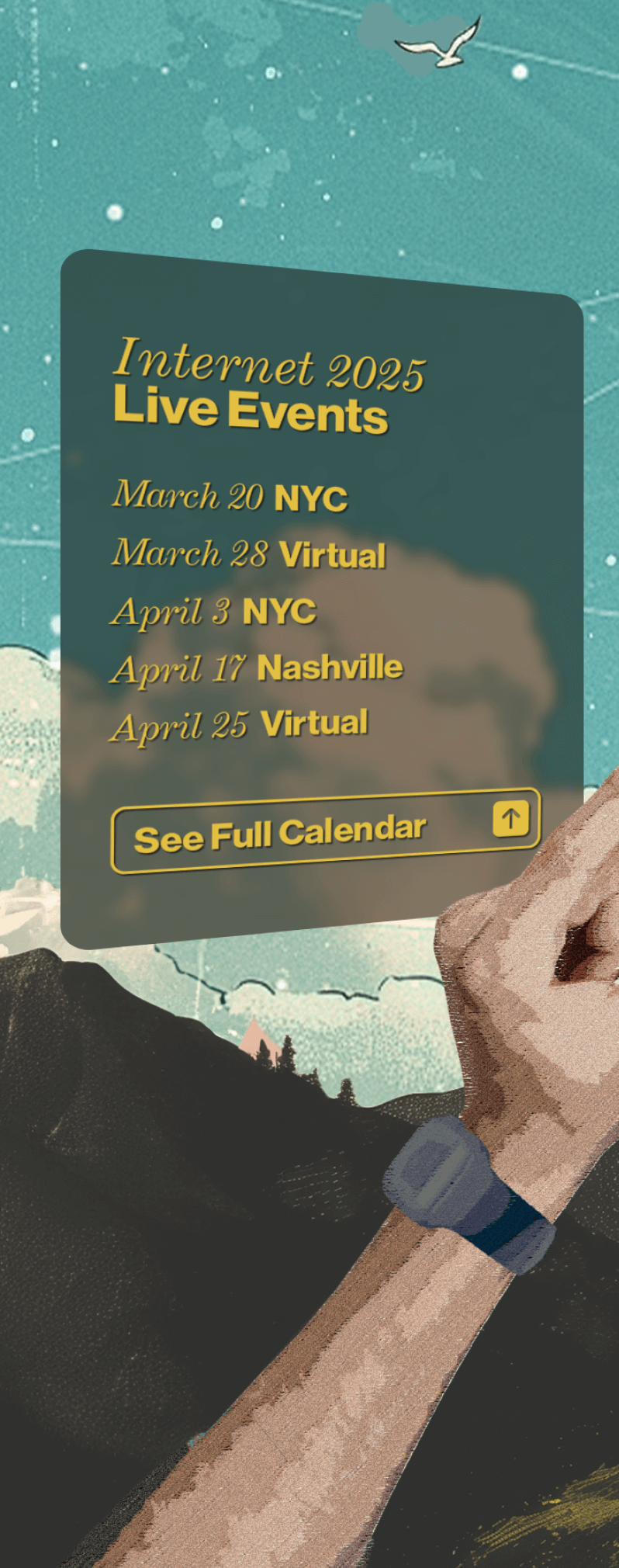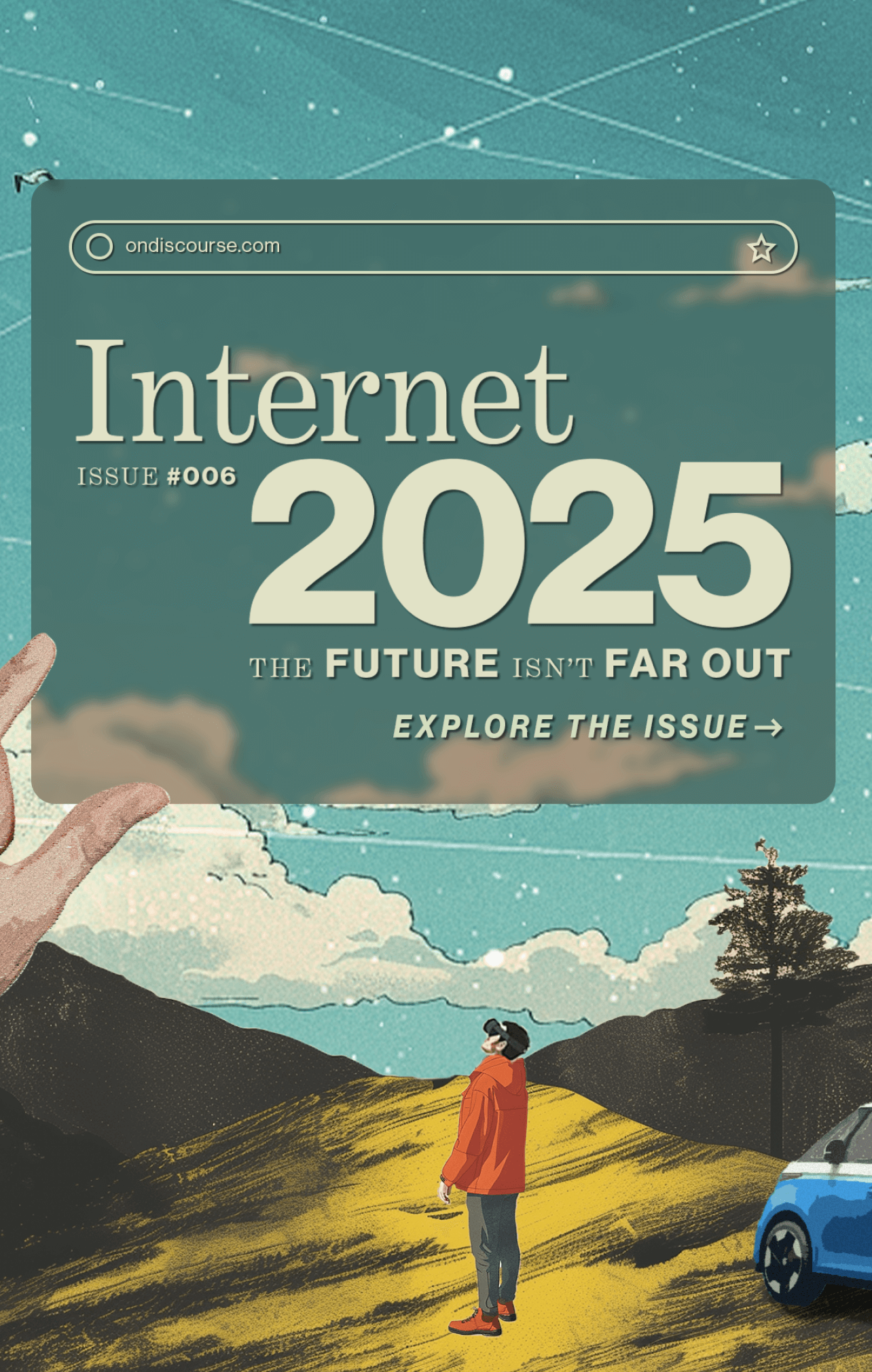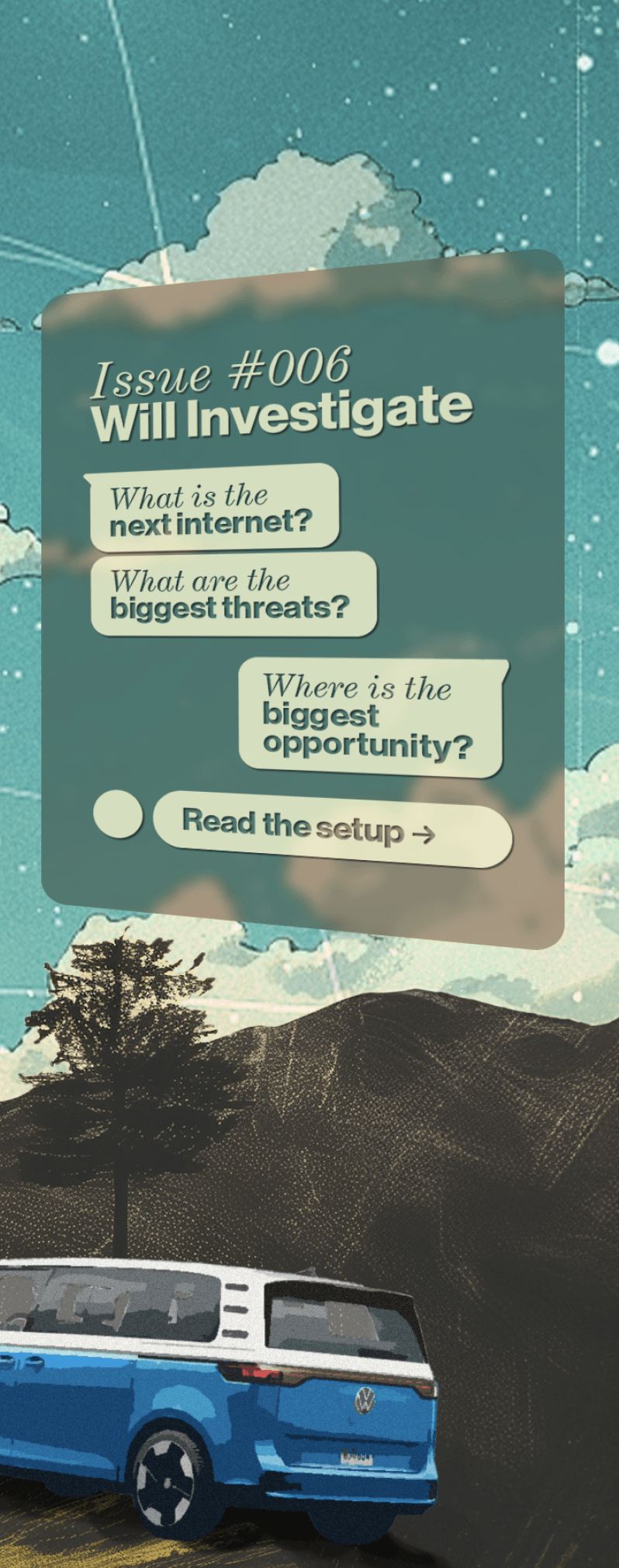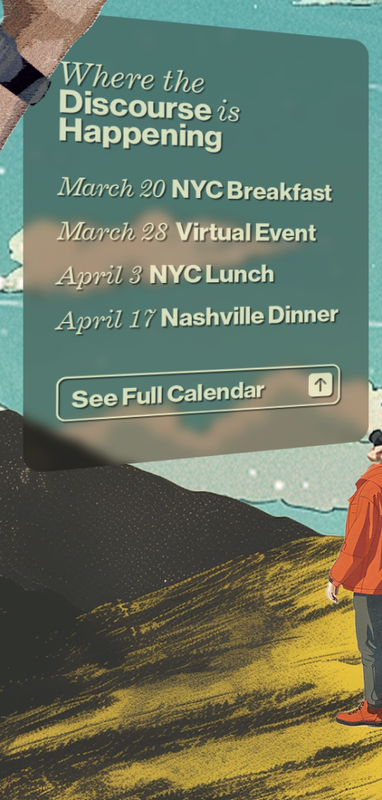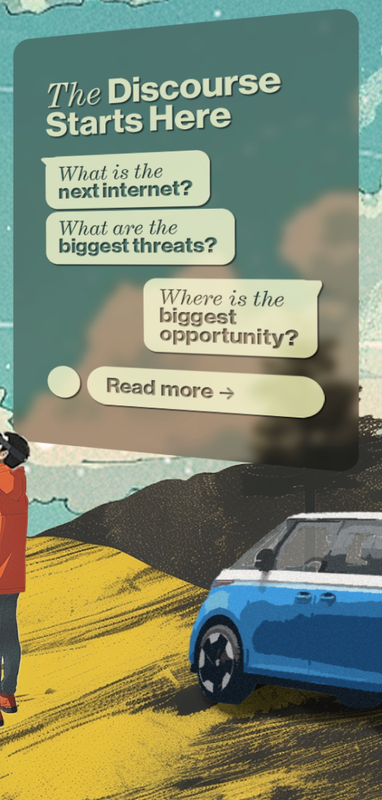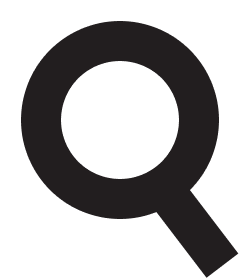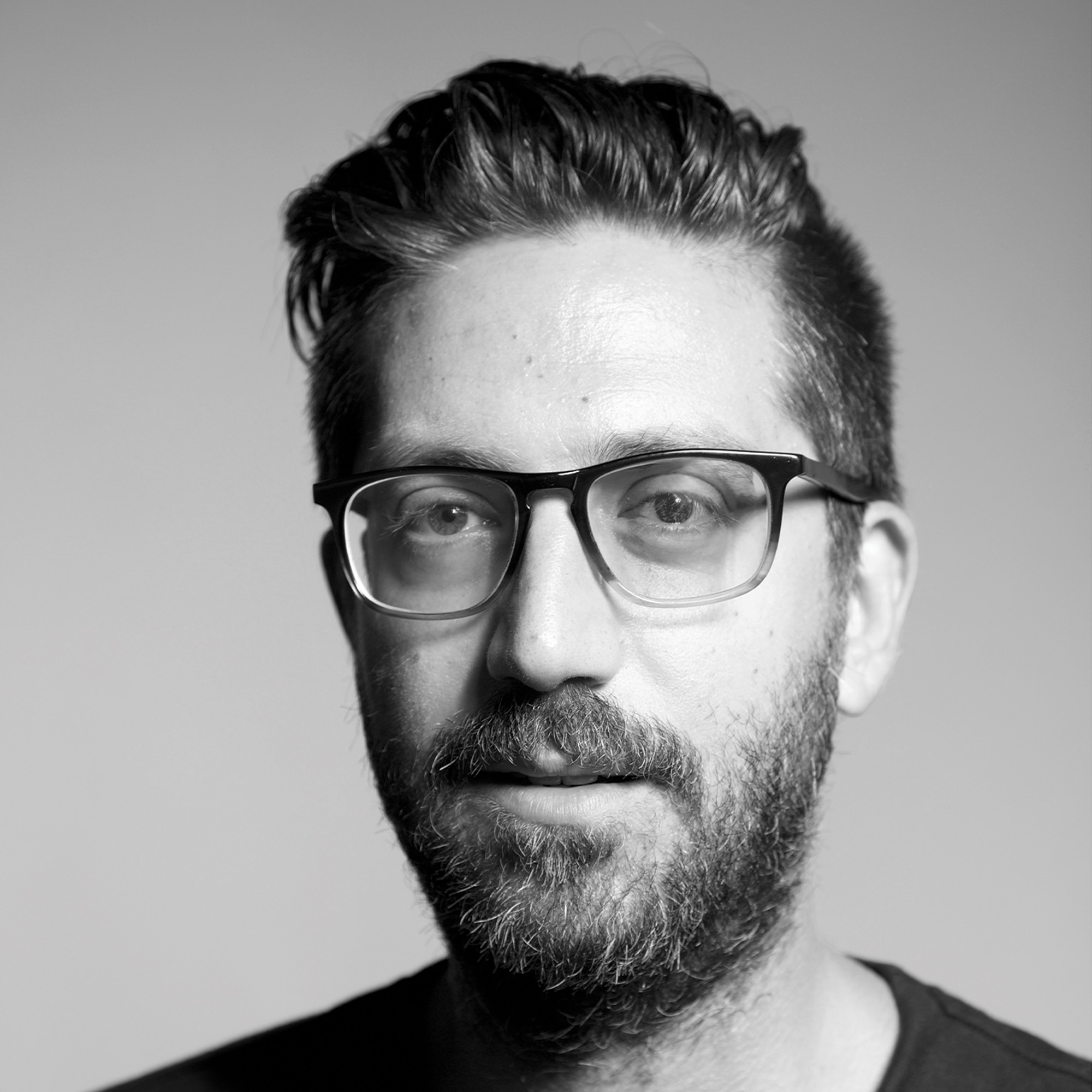
AI Needs
a Feedback
Layer
The next big AI acronym might be: RLHF
Editor’s note: This one caught us by surprise. Sam was in a recent Group Chat dedicated to Gen Z and AI when he suddenly started talking about RLHF. We can’t prove it yet, but Sam might be describing a very important layer to agentic AI that is not yet mainstream.
We are living in an AI gold rush. Instead of shiny rocks, modern-day 49ers are in a desperate search for ‘smart’ features that proactively solve problems and act like a member of the team. And just like a pile of pyrite, these features do not stand up to any kind of scrutiny.
Let me break this down as a scenario.
Your Company Hires a New Agent
On a Monday morning, an employee logs into Slack and is greeted by a message:
"Hi! I’m your new AI teammate. I can help you write client emails, prep briefs, and summarize meetings. Just @ me and tell me what you need."
They type the first prompt:
“Write a quick note to a client thanking them for last week’s meeting and teeing up next steps.”
The reply comes back in seconds. It's… fine. A little stiff. Some awkward phrasing. Definitely not ready to send.
So the employee edits the message. Softens the tone. Adds a reference that the AI missed. Tweaks the subject line. Then sends it off.
A few hours later, they try again. Another prompt. Another almost-right reply. Another round of edits.
This is the invisible labor of AI integration: micro-corrections. Dozens of small decisions made by humans to fix AI.
Is that supposed to be the future?
Are we expecting every employee, in every company, to become an ad hoc AI whisperer - refining, retrying, adjusting - every time they interact with an agent?
Prompting Is a Process, Not a One-Off
Right now, every AI agent is built on the assumption that the prompt is the product. Once it's crafted, it’s deployed. Frozen in time. Maybe a tweak here or there, but mostly untouched, save for the injection of proprietary data.
But real work doesn’t happen like that. Real work requires feedback - constant, messy, iterative feedback.
If you’re a product manager, that feedback becomes feature updates. If you’re a writer, it becomes revisions. If you’re a designer, it becomes pixel-level nudges. But if you’re an AI agent?
There’s nothing. No loop. No memory. No improvement. Just the same prompt, running in place, never learning.
RLHF: The Invisible Architecture of Feedback
This is the blind spot in today’s AI wave. Everyone is obsessed with building smarter models. No one is building smarter systems of feedback — and that’s where the value is hiding.
The thing we learned from decades of digital products — from DTC brands to SaaS platforms — is that conversion is compounding.
- Small improvements add up.
- Friction reveals opportunity.
- Feedback loops outperform static logic.
We need the same logic applied to AI:
- Not just prompt > output.
- But prompt > output > human feedback > refinement > next output.
This is what reinforcement learning from human feedback (RLHF) does at the model level. But applied AI — the stuff showing up in your inbox, your tools, your meetings — has no equivalent.
And that’s the problem.
The Business Layer No One Is Building (yet)
We’re missing a feedback layer in the AI product stack. Not full-blown fine-tuning. Not manual editing forever. We’re missing a lightweight, structured way to capture, score, and re-integrate human feedback.
A system that recognizes:
- Which outputs worked and why
- Which corrections matter most
- How to improve prompts dynamically based on real usage
This is active prompt engineering — a term still under the radar, but rising fast. It treats prompts not as static strings of words, but as evolving systems. Systems that get better over time, just like any good product should.
Why This Matters
The AI gold rush is full of dazzling demos and “smart” features. But when those features get dropped into real companies, the cracks show fast.
Every AI agent is just a frozen prompt until someone teaches it how to learn. And right now, no one is teaching. That’s not a technical oversight. It’s a business opportunity.
The companies that figure out how to design, operationalize, and monetize this feedback layer — they won’t just have better agents.They’ll have learning systems. Systems that adapt. Systems that compound value over time. Systems that feel alive.
This virtuous cycle between humans and AIs is how we will co-evolve together, complementing each other rather than competing.
Final Thought
The AI gold rush is a good thing. It alone is sparking a new infusion of energy and creativity in the digital market. But this rush does not need more pickaxes, it needs more gold pans and sluice boxes and a lot more real-time feedback data. I am not just standing by with a critique; I am building these feedback systems as we speak.
We run events every week. If you want to participate, inquire about membership here. If you want to keep up with the perspectives that we hear, you can subscribe to our weekly newsletter.
You
Are Wrong,
Saneel
Catch up on the debate
A NEW ECONOMIC MODEL
Do not expect the next tech innovation to come out of a garage
The next internet is for the platforms
ORIGINAL POST

AI Will Reverse the Innovator's Dilemma Market leaders are the secret winners to AI disruption

Saneel Radia
04•01•24
REACTION
You Are Wrong, Saneel AI will democratize innovation which means we will see it come from smaller companies and creators
Overheard at ON_Discourse
05•06•24
AI will democratize innovation which means we will see it come from smaller companies and creators
Overheard at ON_Discourse
Editor’s note: We published Saneel’s post about innovation in early April and recently received a message that directly challenges his thesis. At ON_Discourse, we live for this kind of dialogue. It doesn’t hurt when the post has a substantive Jeff Goldblum reference.
This post was written by a human and narrated by an AI-generated voice. (powered by Wondercraft.ai).
Saneel, your argument is too broad. On one hand, I agree that the platforms have more resources, data, and capital to create new kinds of experiences in the next internet, but that does not mean all innovation will be coming from them. As Jeff Goldblum said, life finds a way. In this regard, the human need to create, to push, to thwart, to resist, to stand out, to communicate, and to connect will drive new experiences without the extra push that comes from the platforms.
I have seen it in my own field of luxury goods: AI tools are opening new capacities and capabilities to smaller and smaller entities. As a result of this, more and more independent creators are competing with conventional design teams. AI is scaling their inherent taste into studio-quality products.
I don’t know what it will look like; I can’t predict, and I don’t think you can either. All I know is that human creativity is getting amplified by this technology. The innovation might not come from a garage, but I do not expect it to come from the board room either.
Let’s see…
In 2025,
Media Needs
to Take Community
Back From
The Platforms
The biggest content creators can create the most valuable online communities

Editor’s note: Our own head of content and platform has a strong take about the future of media in 2025. We think his perspective has credibility; he’s pioneered social media publishing at Reuters, edited at the Wall Street Journal; ran one of the most innovative media startups in the aughts, and his team won an Emmy for digital work at The Daily Show. His take for the future sounds like a blast from the past. We think he has a point.
This post was written by human Anthony DeRosa and narrated by AI Anthony DeRosa (powered by Wondercraft.ai).
The way we communicate and share our passions has drastically evolved in the past two decades. Social media platforms, operated by large tech companies, have become the central hubs for discussions on a myriad of topics, from technology to automobiles.
It shouldn’t have been this way. Media companies should own their audiences. They’ve allowed tech companies to steal their content and monetize it by providing a platform for readers to discuss it. How absurd is that? The only value add that tech companies have layered on top of the content paid for by media organizations is to shove it through a system optimized for engagement, which usually means the most polarizing and hate-read-worthy stuff gets the most eyeballs.
Now, they’re letting AI companies get away with this. AI companies, like OpenAI and Anthropic, are hoovering up massive amounts of media content, paid for by media companies, that AI platforms can then reformat into an information system to provide a new experience for the same readers who would have gone to the source for that information.
Let’s be clear, this is entirely the fault of media companies, who should have been thinking like tech companies all along and leveraging AI for their benefit instead of allowing OpenAI to take their content and raise billions off of it. Where are the tech R&D labs inside media companies? Why are they constantly 10 steps behind? Whether the reason is snobbery, hubris, or a combination of both, they failed to see the path of their salvation right in front of them. Instead, they allowed others to take their business and grow it exponentially, and without a dime to show for it.
While it seems they’re about to get mugged by OpenAI, another opportunity for media companies has emerged. Today, social media is in decay. Media companies could use this opening to take their communities back. Many social media users are now longing for a return to a more specialized, intimate form of online community. There’s a desire to return to the days when conversations about specific interests were held on dedicated media websites, where affinity and expertise, rather than algorithms, drove the discussions.
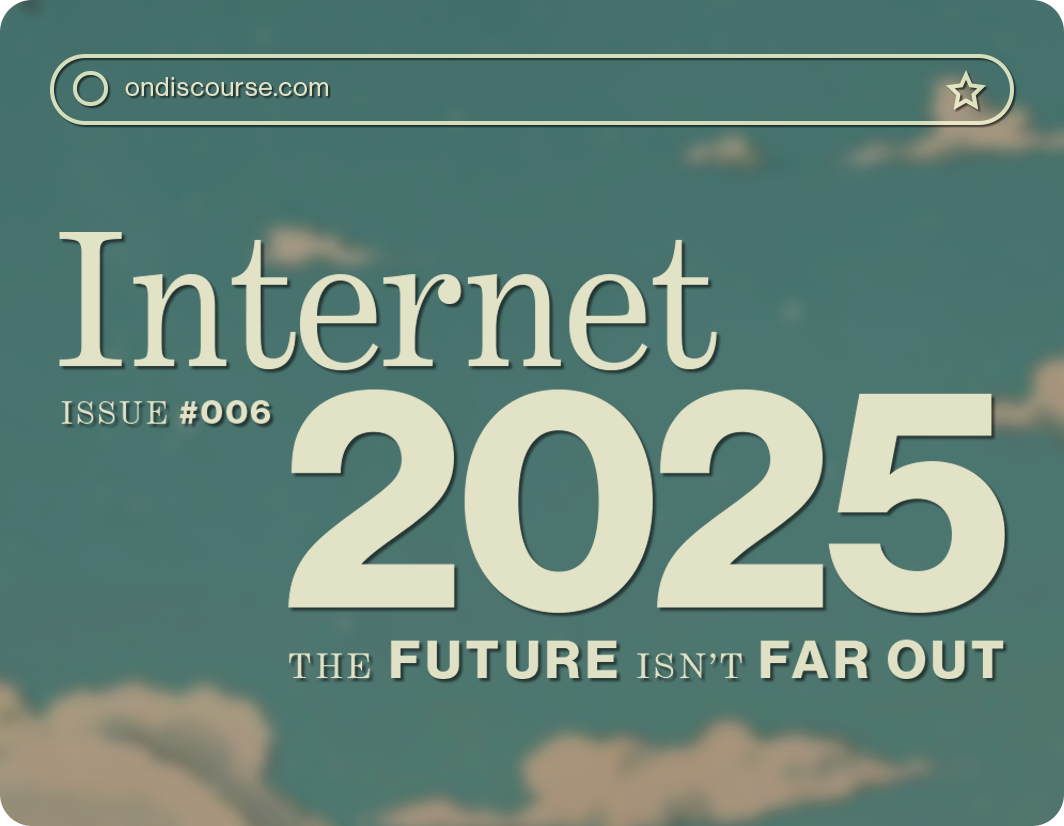
A NEW ECONOMIC MODEL
Who should run online communities?
Platforms, media, or maybe something else? We capture a debate...
MEDIA
In 2025, Media Needs to Take Back Community From The Platforms The biggest content creators can create the most valuable online communities

Anthony DeRosa
05•02•24
SOMETHING ELSE
Media Can't Handle Community Your argument sounds right but doesn't hold up
Overheard at ON_Discourse
05•03•24
The Lost Art of Specialized Forums
There was a time when media websites were not just destinations for content, but also thriving communities where enthusiasts and experts gathered. Websites were not just sources of news and reviews but also vibrant forums for discussion and exchange. These platforms offered a sense of belonging and a shared space for individuals passionate about specific subjects. The conversations were rich, informed, and focused, providing value that oftentimes far exceeded the content of the articles themselves.
One of the best examples of this was Kinja, the publishing system built into the Gawker network. Kinja elevated comments to posts. You could find that some comments that originated under articles became the spark that led to even more discourse than the original article itself. Nick Denton, Gawker’s founder, was smart enough to realize this and built Kinja in such a way that elevated comments to the level of articles.
The quality of comments was so strong that many of Gawker’s best writers—Hamilton Nolan, Ryan Tate, Gabriel Delahaye, and Richard Lawson among them—were plucked from the comments section to become staff writers. The debate and commentary that ensued there became a farm system for some of the internet’s most interesting writers in the 2000s.
The success of early media communities stretched into the newsroom. An engaged community feeds the editorial machine with contextual, relevant perspectives guaranteed to maintain valuable audience engagement. Not only is it a good feature, it’s a good business model.
The rise of social media changed the landscape. Platforms like Facebook, Twitter, and Reddit made it easier than ever to find and participate in conversations on any topic imaginable. The barrier to entry was low, and the reach was vast. However, this accessibility came at a cost. Discussions became broader and less focused. The intimate community feeling of dedicated forums was lost, and the quality of conversations often suffered. Moreover, the algorithms that dictate what we see on social media can limit exposure to new ideas and diverse opinions, creating echo chambers.

The intimate community feeling of dedicated forums was lost, and the quality of conversations often suffered. Moreover, the algorithms that dictate what we see on social media can limit exposure to new ideas and diverse opinions, creating echo chambers.
The Challenge of Managing Community
Moderating a dedicated space to ensure discussions remain respectful, informative, and on-topic is a considerable challenge. As online discourse became increasingly polarized, moderation grew more complex and resource-intensive. Media companies faced the difficult balance of fostering free speech while preventing harassment, misinformation, and toxic behavior. For many, the risks and costs associated with maintaining these standards became too great.
Around 2015, media websites began to retreat from commenting. Media companies tend to copy each other’s strategies, if one decides comment sections are no longer useful, like lemmings they all fall into place and join the trend. In the last decade since that retreat, innovative approaches, such as integrating forums more closely with content, leveraging advanced moderation technologies, and exploring alternative revenue models, offer hope for the future. These efforts aim to recapture the sense of community and depth of discussion that specialized forums once provided, adapting them to the realities of today’s internet landscape.
Despite these challenges, there remains a significant appetite for specialized spaces among many internet users. These individuals seek out places they can dive deep into their interests with like-minded peers, away from the noise and distractions of broader social media. Recognizing this, some media companies and independent platforms are exploring new models to revive the spirit of these communities in a way that aligns with the current digital ecosystem.
Furthermore, these communities offer a level of moderation and curation often missing from sprawling social media discussions. They can provide a safer, more respectful space for exchange, free from the trolls and misinformation that plague many social networks.
Your Audience is Your Business
The longing for a return to media website forums is not just about nostalgia; it’s about recognizing the value that these communities add. When conversations are tied to media sites focused on specific subjects, the discussions are enriched by the content. They are informed by the latest articles, reviews, and analyses, creating a cycle of engagement that benefits both the readers and the websites. This environment fosters a deeper connection between users, who are drawn together by shared interests and expertise.
The challenge is for media companies to recognize the untapped potential of their online communities. Investing in these spaces, encouraging engagement, and facilitating conversations can add significant value. This goes beyond simply having a comment section under articles; it’s about creating integrated forums, hosting Q&A sessions with experts, and actively participating in discussions. Media companies have the unique advantage of being able to offer authoritative content that can anchor and stimulate conversation, something that generic social media platforms cannot replicate.
The desire to shift back to specialized forums on media websites is a call for a more meaningful online community experience. It’s an acknowledgment that while social media has its place, there is immense value in gathering spaces that are dedicated, focused, and enriched by shared interests and expertise. For those passionate about technology, cars, or any other subject, the hope is that media companies will rise to the occasion, revitalizing their community engagement efforts. In doing so, they can rekindle the sense of belonging and purpose that once defined the online discussions of enthusiasts and experts alike.
Media
Can't
Handle
Community
Your argument sounds right but doesn’t hold up
Editor’s note: Anthony had a long chat with a prominent media figure who has dabbled in a lot of noteworthy online community experiences. This reaction piece reflects some of the hidden costs of pursuing a large scale community strategy. Does this make Anthony’s take wrong?
This post was written by a human and narrated by an AI-generated voice. (powered by Wondercraft.ai).
Legacy media outlets, with their grand history and established presence, are too stuck to foster genuine community engagement. These organizations carry the dual burdens of size and tradition, which can restrict the flexibility needed to adapt to the rapidly changing digital landscape. The culture of old media is too strict to open itself to real communities.
One of the core struggles within these institutions is the rigidity of editorial norms that do not necessarily align with the conversational, nuanced content that modern audiences gravitate towards. In contrast, platforms like podcasts allow for a meandering exploration of topics without the pressure to reach definitive conclusions. This format caters to a substantial appetite for extended discourse that is not just informative but also engaging on a personal level.
Moreover, there is often trepidation within these traditional media houses to fully embrace new forms of interaction and community-building. The fear of diluting the brand’s voice or alienating segments of an established audience can lead to conservative content strategies that ultimately inhibit genuine engagement. They don’t want to be seen as unknowing; they always want to be right. More than that, they think they have to be right in order to be relevant.
The fear of diluting the brand’s voice or alienating segments of an established audience can lead to conservative content strategies that ultimately inhibit genuine engagement.
Yet, it’s this very engagement that is crucial for the survival and growth of media institutions in the digital era. Community isn’t just about bringing people together under a common brand; it’s about fostering an environment where dialogue, interaction, and personal connection thrive. This challenge is magnified in legacy media by the need to balance respect for traditional journalistic values with the demands for more dynamic, interactive content formats.
The rise of individual content creators and smaller, more agile media entities showcases a stark contrast. These creators are not bound by the same constraints and can therefore pivot quickly, experiment more freely with content, and build intimate communities around niche topics. Their success underscores the need for larger media companies to innovate in community engagement without sacrificing the editorial integrity that has defined them.
Building community in this context requires a reevaluation of what community means in the digital age. It demands an openness to evolving how stories are told, engaging with audiences on their terms, and creating spaces for meaningful interaction.
As legacy media navigates these turbulent waters, the path forward involves a delicate balancing act: integrating new media dynamics while staying true to the core values that have sustained them through the ages. Only by doing so can they hope to not only preserve but invigorate their place in the digital world, turning their ocean liners into agile fleets ready to meet the future.
So in conclusion...
Google has profited immensely from the marketing world’s obsession with its black-box search algorithm. This obsession unlocked a deeper technical understanding of how online search works so brands can carve out opportunities to differentiate. It is therefore logical that markers begin to explore how LLMs respond to prompts. There is an undeniable symmetry in these two technical processes.
One of the interesting takeaways from this discussion is the inherent strength legacy brands will have in this upcoming AI era. They already possess the collateral that initially fed the data set behind the model. It makes us wonder how new brands should think about this upcoming era. Is there anything they can do?
This article is part of The Intelligently Artificial Issue, which combines two big stories in consumer tech: AI and CES.
Read more from the issue:
USER EXPERIENCE
Augmented Intelligence: from UX to HX
Will prompting replace browsing?
The car is the gateway drug to a voice-first acceleration
The prompt interface needs a redesign
RE-ORG
AI will brainstorm your next reorg
Expect fewer managers and direct-reports
AI is too immature for your business
AI is not a new revolution
BRAND
Should we ignore the hardware?
Can AI help consumers love your brand?
Your brand doesn't have enough data for AI
Can LLMs be optimized like search results?
Good brands will integrate more friction into their C X
AI is too
immature
for your
business

From the editor: One of our most credentialed AI experts shared some essential perspectives for companies betting on AI. This speaker has a PhD in Brain and Cognitive Sciences, and has been working on machine learning models for over 15 years. As always, ON_Discourse operates under the Chatham House Rule—no attribution of perspectives without explicit consent.
AI is an
adolescent
This tech revolution is built on bad behavior.
AI behaves like a teenager. It is moody, unreliable, and unpredictable. It needs constant supervision.
Are you sure you want this kind of technology driving business decisions?
Without any guardrails in place, AI models trained on text scraped from the internet swear at you, call you names, go off on sexist and racist rants, and so on. These are very teenager things to do: saying something just to say something, without realizing what it actually means, how bad it is, or what the repercussions in society might be.
Companies form so-called red teams to perform adversarial testing on their AI systems. These tests try to make an AI model do all the worst stuff possible, so that the companies can then prevent it from doing that stuff when it’s talking to their users.
Many people don’t realize that a lot of the work around AI currently involves babysitting models so that the end user doesn’t realize that the tech needs to be babysat. In short, companies are hiding how incredibly immature AI still is.
Keep this in mind before, during, and after you deploy any sort of AI tech across your organization.
This article is part of The Intelligently Artificial Issue, which combines two big stories in consumer tech: AI and CES.
Read more from the issue:
USER EXPERIENCE
Augmented Intelligence: from UX to HX
Will prompting replace browsing?
The car is the gateway drug to a voice-first acceleration
The prompt interface needs a redesign
RE-ORG
AI will brainstorm your next reorg
Expect fewer managers and direct-reports
AI is too immature for your business
AI is not a new revolution
BRAND
Should we ignore the hardware?
Can AI help consumers love your brand?
Your brand doesn't have enough data for AI
Can LLMs be optimized like search results?
Good brands will integrate more friction into their C X
Expect
fewer
managers
and
direct
reports
From the editor: This overheard passage comes from a virtual event that featured a productive disagreement between members. In this piece you’ll see two opposing perspectives about the well-worn assumption that AI will replace labor. As always, ON_Discourse operates under the Chatham House rule—no attribution of perspectives without explicit consent.
Yes, and here's why
AI could accelerate the flattening of organizations
MBA programs didn’t prepare anyone for this. The accelerating adoption of AI tools could completely redefine how businesses organize. The first dominos to fall will be the HR and management layers. At first glance this seems like a bad thing, but it’s not…
Growing
without
headcount
Today’s model is fundamentally stupid—I don’t mean that pejoratively. Managers are incentivized to grow their teams regardless of need. Why? Having more direct reports leads to more promotions and more raises for managers. This sustains a conventional growth model that leads to overhiring and layoffs.
AI tools will disrupt the need for companies to grow their workforces by injecting intelligence and data into this dumb growth model. The knee-jerk reaction to such a shift typically sounds like, “If we don’t grow our teams, how are we ever going to get promoted and have a career path?”
This thinking is rooted in the assumption that a hierarchy and a climbing mentality are required for growth. AI tools will reveal that this is not the case, and adding people will not be seen as a requirement for revenue growth.
Instead, revenue growth could be achieved while keeping headcount flat, or even through reductions. Many non-revenue-generating roles, like in HR and middle management, will start to disappear. Active executors that have a more direct relationship with the bottom line of the organization will replace them.
Focusing
on what
matters
People managers who remain will have more time to focus on their hands-on efforts. These individuals were good enough at doing something to get promoted. Their employers will develop metrics and goals around those skills, unlocking an entrepreneurial spirit.
Instead of adding more people to manage, people managers will become more focused on outcomes. AI tools could help incentivize individual contributors based on what uniquely motivates them and the impact they can make.
On the HR side, plenty of functions could be handled by AI, possibly with less bias, more clarity, and more transparency. The processes could be opened up and deployed more equally across teams.
More layers and hierarchy only distract from revenue-generating functions and complicate decision-making.
Better
outcomes
This has important knock-on effects. Non-revenue-generating roles pull businesses further away from their customers and the outcomes they want. More layers and hierarchy only distract from revenue-generating functions and complicate decision-making, whereas fewer non-essential roles could mean more focus on translating user needs to products and services.
Some argue that AI can just help bring all the data needed for decisions to the top of the organization, but that’s backward. Why bother having such a structure? Instead, flatten your organization and empower more people to make decisions closer to the customer.
AI tools will disrupt the need for companies to grow their workforces by injecting intelligence and data into this dumb growth model. The knee-jerk reaction to such a shift typically sounds like, “If we don’t grow our teams, how are we ever going to get promoted and have a career path?”
This article is part of The Intelligently Artificial Issue, which combines two big stories in consumer tech: AI and CES.
Read more from the issue:
USER EXPERIENCE
Augmented Intelligence: from UX to HX
Will prompting replace browsing?
The car is the gateway drug to a voice-first acceleration
The prompt interface needs a redesign
RE-ORG
AI will brainstorm your next reorg
Expect fewer managers and direct-reports
AI is too immature for your business
AI is not a new revolution
BRAND
Should we ignore the hardware?
Can AI help consumers love your brand?
Your brand doesn't have enough data for AI
Can LLMs be optimized like search results?
Good brands will integrate more friction into their C X
I totally disagree
AI will need many more managers
- No conventional MBA graduates in management are prepared for the AI era.
- The proliferation of AI products and services will change management structures.
The rest, you have backwards. The number of managers is going to grow significantly in the near future. We are going to need more people to manage the adolescent that is AI.
Adding AI products and services to the toolbox creates a new output signal that businesses need to wrangle. This in turn calls for another human layer to figure out how the AI tools are performing and how they are changing the way we ingest new information.
We are going to need more people to manage the adolescent that is AI.
AI tools could create
a lot more noise
for decision makers
Because we have more signals coming in, we will ultimately make better decisions. Those additional signals, however, require more data science teams, more linguists, more operational people, more people managing how the models are performing, more people monitoring any human bias that is going into those models, and so on.
Industry expertise will remain vital. Companies will demand subject matter experts who decipher the truth within AI-generated content.
There are limitations to what AI can produce. Only humans can figure out that last critical bit. Non-technical roles, filled by creative and culturally-aware individuals who bridge technical jargon and diverse global perspectives, will grow in importance.
In fact, we might see high demand for managers who can attract the right mix of these unique, multidisciplinary groups of people, and know how to get them to work together productively and efficiently. AI simply doesn’t have the people skills to manage divergent perspectives and disciplines into a cohesive group.
More technology will once again require more humans to manage it.
Can AI
help
consumers
love
your
brand?
From the editor: Ahead of our CES trip, we held a spirited discussion about the future of brands in the AI era. One of our most provocative discussions centered on the idea that AI functionality can unlock deeper relationships with brands. Is this true? Or are post-purchase activation schemes a rehash of old ideas?
Yes, here's how...
Invest in differentiated activation experiences - with AI’s help.
Think about the brands you trust and love—the ones you rely on to do a job better than any of their competitors. If they’re smart, they’re always looking for ways to grow their relationship with you by becoming more meaningful. The stronger their relationship with you becomes, the greater their margin and pricing power.
True brand power is a high CLTV to CAC ratio and customers who say, to misquote a line from Brokeback Mountain, “I can’t quit you.”
AI WON’T change this reality because we’re human and we want the decision shortcuts brands give us.
AI WILL exacerbate the need for brand relationship building and give brand marketers a powerful tool with which to do it.
AI WILL ALSO muddy the waters for brands fighting for differentiation, and a share of a consumers’ heart and wallet. There is a way around this.
Brands live on a continuum from branded commodities (oatmilk, sugar, etc.) to “n of 1” companies (Instagram, Carta, Slack, Apple, etc.). While AI will impact all of these brands, from their products to how they show up in the world, it’s the brands in the middle for which AI presents the biggest threat… and the biggest opportunity for innovation and relationship building.
The muddy AI water: generative AI for brand differentiation isn’t “all that.”
So, how can brands differentiate in the AI era and how can AI help?
To answer this question, forget about technology and AI for a moment.
Human nature doesn’t change and marketers know what makes consumers tick. They also know their brand’s personality, how it lives in the world and the moments, outside of purchase, where a consumer might find the brand relevant or useful. This is basic brand activation, but done more thoughtfully so a brand can continue to endear itself to the consumer. (And if you’re thinking about activations as “personalized rewards” post-purchase, that’s cool… but that isn’t really this – or it isn’t all of this!)
Brand activation, especially the post-purchase “hours” of 8:00 PM to 12:00 AM on a brand strategy clock, help a brand break free from the sameness of AI-generated digital mind melds and put the consumer at the center to grow the relationship. Using brand activations, marketers can wrest control of AI and use it to their advantage via interactions that unlock contextual customer data and insights, which help marketers ideate ways for a brand to authentically show up in the world and be relevant in ways that extend beyond product use.
Strategic post-purchase brand activation builds a flywheel of engagement, a more efficient allocation of human and financial capital from advertising to brand engagement and, ultimately, to an increase in CLTV/CAC.
In brief, a brand team’s hard-won epiphany of how its brand is differentiated is communicated to the consumer in ways that reinforce past purchase behavior, incentivize repeat purchase behavior, and ideally make the brand part of someone’s life and perhaps their identity.
If you listen to Spotify, you were recently treated to their Wrapped experience. If you fly Delta, you just received a visual summary of all the ways Delta helped you in 2023—your most visited cities, flights, and upgrades. They also reminded you how they could help you in 2024. These weren’t fancy, but they were useful, relevant, and designed to meet the consumer, (me, in this case), where they are beyond the purchase moment.
These examples are only two of the countless ways a brand can authentically have a meaningful activation moment; the best ones will grow their relationship with the consumer. This is where AI insights can help. Traditional and social media channels can do this, but they can be expensive and aren’t designed to deliver the nuanced, relationship building, context that is possible here.
If you know me, you know I’m an early adopter who is always looking for ways to use technology to meet the consumer where they are. I look at AI as a tool to do just that. That said, there is no single “right” way to move forward, but move forward we must. After all, DVDs and CDs used to be billion dollar businesses until new technology came to town.
Even if you’re not 100% sold on the concept of AI-informed post-purchase activations and experiences, I urge you to entertain the possibility. It’s just good business.
Your opportunity
By its very definition, a brand must be differentiated enough from its competitors to outsell its competitors.
To get the desired output of dynamic, differentiated positioning, you need dynamic differentiated input AND an ability to create connections between disparate elements. This is really hard to do—it’s a never-ending battle. There are conference rooms strewn with takeout containers and overfilled trash cans from weary product teams trying to win the war. (Coke vs. Pepsi, anyone?)
Unfortunately, differentiation isn’t enough. Today’s consumer faces a cacophony of SEO-driven messaging and data overload that threatens to water down the positioning born from years of brand research, insights, and takeout containers.
The instinct to use generative AI as a positioning tool shortcut makes sense and yet, it’s risky. Large Language Models (LLMs) are still relatively new and they’re currently processing and converting structured, unstructured, and dark data from everywhere without nuance or a critical eye. In other words, generative AI positioning is a regression to the mean and without a human’s watchful eye can be a melting pot of average.
This article is part of The Intelligently Artificial Issue, which combines two big stories in consumer tech: AI and CES.
Read more from the issue:
USER EXPERIENCE
Augmented Intelligence: from UX to HX
Will prompting replace browsing?
The car is the gateway drug to a voice-first acceleration
The prompt interface needs a redesign
RE-ORG
AI will brainstorm your next reorg
Expect fewer managers and direct-reports
AI is too immature for your business
AI is not a new revolution
BRAND
Should we ignore the hardware?
Can AI help consumers love your brand?
Your brand doesn't have enough data for AI
Can LLMs be optimized like search results?
Good brands will integrate more friction into their C X
Not really
There's no research to confirm customers want relationships with brands.
The first thing I have to say before we get into any debate about the future of AI is that no one knows what will happen. Anyone that gives you a more confident answer to questions is definitely full of shit.
Regarding your perspective: we partially agree on an important point:
My agreement with you comes with a caveat: if we reduced a brand to the values in a manifesto or the colors of a logo, then the averaging out of brands in generative AI experiences would be a problem.
But… that is not how I believe brands work. I believe Byron Sharp’s theory about how brands grow. A brand emerges over time, after the audience embeds its signals in their collective memories. A generative AI model is a reflection of what is already out in the air. I’ve been experimenting with different models and am seeing that many models seem to distinguish between strong brands and vague ones.
We kind of agree that customer-facing generative experiences are homogenizing brand elements.
You place a lot of emphasis on pre and post-purchase activation. I take another angle. Differentiation will come from good creative marketing, which is less common than it should be. Strong brands have been living on the dividends that were paid thirty years ago. Now is the time for creativity. As this technology propagates, more middling brands will elevate their creative output into a generic median – good enough output. Human creativity, augmented by AI capabilities, will further distinguish strong brands from that median.
We also kind of agree that brands need to find a way to distinguish themselves from each other.
You are describing a mass personalization experience across most CPG brands. I’ll just state it like this: there is no research to suggest that consumers want a relationship with brands. The buyers of Crest of Colgate are not interested in joining a social network dedicated to whiter teeth. They buy their respective brands based on the same theories that have driven marketing for generations.
Finally, I do not agree with your point about post-purchase opportunities.
Yes, they do!
Now is the time for brands to invest in differentiated activation experiences - with AI's help.
Noah, you’re right. There are post- purchase activations that are irrelevant, annoying, time consuming, and invasive; no one wants those! Not having insight into how the survey was conducted, my gut is that when people were asked about brand follow-up they had the annoying kind in mind.
To quote Scott Galloway from “No Mercy / No Malice”, “brand is Latin for irrational margin”, and the best ones drive that margin by being omnipresent and meaningful, especially post purchase. It’s a way to reinforce behavior, stay top of mind, and reduce the need to advertise in conventional ways. Brands live everywhere they need to and maintain their margin via post-purchase activation and foundational brand building.
Many of the people who said they didn’t want post-purchase brand engagement probably shop at an Apple store, (itself a form of post-purchase engagement), use the post-purchase activation that is the Genius Bar, and tune into Apple events. In other words, post-purchase activations can be covert and feel seamless, which is probably the best way.
For a covert activation combined with foundational brand building, look at the Tide. Tide’s environmental research efforts, (e.g. cold water washing for the environment), their WWF partnership, product innovation in stain removal, and their“Loads of Hope” community program are all authentic Tide moments and reinforce what people think of Tide, and, what they think of themselves.. They’re done to keep the brand top of mind and psychologically reward purchase. Tide appeals to people’s hearts (we help you save the planet, help others, and keep your, and your family’s, clothes clean).
Tide’s post-purchase activations are subtle and the “distribution channels” are primarily PR and co-branding, (awards such as ”Better Homes and Gardens”) targeted towards their core consumer. Because I’m hard to reach via advertising, and a Tide loyalist, my interaction with the brand was via a Malcom Gladwell podcast about laundry! (highly recommend)
Think too about Lululemon – in-store classes, free hemming, repairs ... consumers WANT this! They just don’t think about these as post-purchase activations, so they would say “no” if asked. And if you’re a baker, King Arthur has done a spectacular job of creating a premium flour brand with their cookbooks and digital resources. (I’m a fan of this brand too!)
The level of activation has to be commensurate with the meaning a brand has in someone’s life and the job it does. It’s even better if it’s seamlessly woven into someone’s life in a relevant way.
For overt activation, think of any automotive brand. The brand is always in touch with you via their app, their service and their special edition mugs (that maybe someone buys!). They also rely on their sales force to help you stay wedded to their brand. Also, for overt but “in service to the consumer,” think Apple, Nike, Nespresso, Disney, Delta, Amex, etc.
Can AI help any of the brand teams behind these and other brands gather insights to continue to elevate? Of course!
P.S. A bit closer to home I just noticed that Piano.io - Analytics & Activation is building out a third space in the Flatiron district of NYC. I have no idea if AI was used to deliver consumer analytics that inspired that brand activation experience, but it could have!
True brand power is a high CLTV to CAC ratio and customers who say, to misquote a line from Brokeback Mountain, “I can’t quit you.”
The
prompt interface
needs a
redesign
No, it doesn't
We need “smarter” humans, not design
Everybody hates chatbots. And yet, the fastest growing consumer-facing technology in human history is basically a chatbot. Is there a problem here? Is this a good moment for a design intervention?
Let me start with a fundamental question: why do people hate chatbots? Is it the design, or the experience?
Historically, conventional customer service chatbots were insanely annoying and, critically for users, fundamentally dumb. They locked users in a recursive loop of unanswerable questions that yielded no results; the only escape from this torture was to force a connection with a human.
In this moment, the human represents context and the ability to reason, while the bot represents a brick wall. So let me answer the first question: the reason people hate chatbots is the experience. The design is fine.
What happens when the conventional chatbot interface is replaced by a different backend technology? Generative AI is doing this right now by breathing artificial cognition into the brick wall, giving it the ability to convert context into reason, turning the whole interface on its head. No more need for any human intervention.
Layering generative AI into chatbots introduces two problems that a redesign cannot solve.
The first problem: humans are biased against chatbots.
They see the interface and automatically expect a conventionally dumb experience. This also happens when you see a website with a web 1.0 design. As a result, they enter into the experience with a lower level of engagement that affects the quality of their prompts. As the saying goes: garbage in, garbage out.
This article is part of The Intelligently Artificial Issue, which combines two big stories in consumer tech: AI and CES.
Read more from the issue:
USER EXPERIENCE
Augmented Intelligence: from UX to HX
Will prompting replace browsing?
The car is the gateway drug to a voice-first acceleration
The prompt interface needs a redesign
RE-ORG
AI will brainstorm your next reorg
Expect fewer managers and direct-reports
AI is too immature for your business
AI is not a new revolution
BRAND
Should we ignore the hardware?
Can AI help consumers love your brand?
Your brand doesn't have enough data for AI
Can LLMs be optimized like search results?
Good brands will integrate more friction into their C X
The second problem: humans are mostly lazy.
They imagine that a generative chatbot is going to magically read their mind and solve humanistic conscientious tasks with minimal effort. This perspective influences the quality of their prompts and the scrutiny they give to the responses. This looks a little different than the first bias: generic prompts generate generic responses that are accepted without a second thought because most don’t realize how much better the output can be.
I have seen user testing experiments that confirm the second problem. Two user groups were asked to brainstorm creative ideas for an imaginary product. One group was given an AI chatbot while the other was given paper and pencils. The AI group produced the least interesting ideas and devoted the least amount of thinking to the assignment (until they were taught how to work optimally with the chatbot).
So let me sum up my argument: The AI chatbot interface does not need a redesign. It needs humans to catch up to its capacity. This involves something bigger than UX design.
Humans need to become better at conversation. This is going to take time, but it won’t be the first time.
I have been working on the internet since the 1990s. I spent time demonstrating internet browsers to executives who were still asking their assistants to print out webpages for them to read. Those executives were uncomfortable by the technology and simply needed more time to evolve. Going back further in the technology timeline, the keyboard and mouse triggered the same response. Sometimes, the design is not the problem and humans just need time to adapt.
Yes, it does
Design can make chat a better experience
It is hard for me to disagree with an argument that is so well-structured. But Henrik, this is ON_Discourse and we have to live by our creed. I think your approach to this topic is overlooking the impact of design and where we are in the adoption curve of AI semantic prompt-interfaces like chatbots we see in ChatGPT or text bars like we see in Google Search.
Before we get there, let me start by recognizing your strongest point:
The mouse and keyboard are an excellent analogy for generative AI chatbots. The analogy works because it acknowledges the transformational context that follows these interfaces. To put it bluntly, there was no precedent for either the mouse or generative AI at the release of either of those products. In both cases, it is natural to accept an elongated adoption curve. Sometimes, the burden just falls on people to figure it out.
But I am concerned by the focus of your argument. At the end of the day, the novelty of this tech does not relinquish the role and value of good design. Do you remember the AOL portal? For a limited time in the 1990’s, this was the predominant way most Americans accessed the internet. It had a design language so ubiquitous that it nearly defined the early-internet. Then new designs and platforms emerged for new behaviors that slowly disintegrated this design system.
When I think about the evolution of semantic chat experiences in the AI era, I see the same massive opportunity that you see, but I think of it in a different way. I’ll break it down in a few ways:
Good interface design focuses on behaviors.
The interfaces that win online are those that more accurately deliver an existing behavior in a better way. Tik-Tok pioneered a new interface for video creation and consumption without instruction manuals. Not only did this interface drive historic audience growth, it also fed an explosion of new UI paradigms for non-content experiences (from news feeds to credit card applications). Good design can accelerate the learning curve without being explicit.
At the end of the day, the novelty of this tech does not relinquish the role and value of good design.
The prompt-era is just beginning.
The use-cases for this interface are still in the proverbial laboratory. This is not the same context of the keyboard or mouse which was one of the essential catalysts of the personal computer revolution. It unlocked new ways of thinking about screen design, leading to the GUI, which ultimately brings us to our own digital discourse. AI is different. It is already propagating in the back-end operations of forward-facing companies. They are using this technology to drive internal creative sessions, augment audience research, and develop deeper customer profiles.
The jury is still out on the prompt.
I have no doubt that the prompt will become an essential interface on the internet, but I question whether it will become the dominant interface. The internet has evolved a number of optimized user experiences that are not served by an open-ended prompt experience. Let me put it this way; I’m not convinced that we are solving consumer problems by replacing context clues on a page with an open-ended prompt experience. In this vein, the customer is burdened with prompting in the right way to get the desired outcomes. I don’t feel like that is an improvement to what we have now (though I understand the impulse to consider it).
The technology behind the prompt is undoubtedly amazing and transformational. I agree that it promises to elevate our collective ability to use conversation to better understand our own needs and to find the information we need. Nevertheless, we shouldn’t assume the current interaction models are the future models. Additionally, when we ultimately deliver this tech, as with everything else that goes in front of consumers, it deserves a thoughtful, considered design.
AI will
brainstorm
your next
re-org
This article is part of The Intelligently Artificial Issue, which combines two big stories in consumer tech: AI and CES.
Read more from the issue:
USER EXPERIENCE
Augmented Intelligence: from UX to HX
Will prompting replace browsing?
The car is the gateway drug to a voice-first acceleration
The prompt interface needs a redesign
RE-ORG
AI will brainstorm your next reorg
Expect fewer managers and direct-reports
AI is too immature for your business
AI is not a new revolution
BRAND
Should we ignore the hardware?
Can AI help consumers love your brand?
Your brand doesn't have enough data for AI
Can LLMs be optimized like search results?
Good brands will integrate more friction into their C X
From the editor: Before the launch of the Intelligently Artificial Issue, we invited Peter Smart, the global CXO of Fantasy, to give a demo of a new AI-powered audience research tool the company calls Synthetic Humans. This article is a distillation of the discourse from that event.
Digital product design does not happen in a vacuum. Designers, product owners, marketing teams, and business stakeholders all have extensive conversations with customers before, during, and after designs are ultimately shipped. This process is timely and expensive and it feeds a thriving user research industry; consumer brands pay a premium for access to real people from target audience segments to record reactions and develop concepts. The vendors and design teams then plot that feedback into thousands of slide deck pages across the land. The testers get paid, the vendor gets paid, the design staff gets approval, and the designs ultimately ship.
Here’s the thing about all of this testing: what if it’s fake? What if real people are the problem?
Real people are too human to be reliable. They lie, they cut corners, and their attention wanes. They’re in it for the money, which obscures their true opinions as they are not invested in the experience. They resist change with red-hot passion before they embrace and ultimately celebrate it. They are not useful testers.
The proliferation of user research as a design process is responsible for standardized and conventional design practices online. It is hard to produce a differentiated design when we try to meet people where they say they are.
Put bluntly, real people are a waste of time and money.
Can AI fix this?
Fantasy believes that the solution to this human problem of qualitative testing is to use AI to develop a new, scalable audience research ecosystem built on synthetic humans.
A synthetic human is a digital representation of a human being, built using an LLM that converts a massive amount of real survey data into a realistic representation of a human being. Think of it as a digital shell of a human cobbled together using thousands of psychographics data points.
Prompting a synthetic human should give you a realistic response. As a result, if you train a synthetic human to deliver feedback and reactions to developing ideas, you should get actionable audience data. These modern-day AI-generated avatars are much more powerful than a chatbot because they generate and sustain their own memories.
We are not talking about Alexa or Siri here. A synthetic human initiated with a preliminary dataset (age, demographics, location, income, job, and so on) can determine, without any other prompt, that “she” has two daughters, aged 5 and 3. These daughters have names and go to a certain school. Their teachers have names and each daughter has a favorite subject or cuddle toy.
If you don’t interact with this synthetic human for six months and then prompt “her” again, these daughters would still be in “her” mind, as would the teachers and the school. In the intervening time, the children might have celebrated a birthday, or entered the next grade, all aspects that get folded into the profile and leveraged for realistic responses. As a result, “her” opinions about your developing ideas can feel more reliable.
Organizations can train these humans to react to developing concepts, or brainstorm new concepts outright. They can also leverage their generative memory capabilities to help organizations overcome embedded workflow obstacles, like stubborn stakeholders.
Let’s say an organization knows that “Bob” in audience development has a reputation for capricious feedback that often causes a production bottleneck. The organization can train a synthetic human to brainstorm ways to overcome Bob’s reputation.
Here’s another example. Imagine prompting two contradictory synthetic humans (one is aggressive and the other is conservative) to collectively brainstorm an idea over the weekend so that you can arrive on Monday to a fresh batch of thinking. These two personalities are not just coming up with ideas; they are reacting to each other’s ideas, giving feedback, rejecting suggestions, and building on top of promising sparks.
What's the catch?
There is always a catch. And at ON_Discourse, we lean into the questions that hide underneath the inspiring claims of innovative technology. There is no denying the potential of synthetic humans. It is a direct response to the biggest issues that plague the audience research industry today. Synthetic humans can stay focused, can offer candid feedback, and can be scaled to deliver deeper insights at a lower cost. These are good things. But there are gaps in the capabilities of these tools. Our virtual discourse on November 30 unpacked some of them and thus the limitations of synthetic humans for audience research.
Synthetic humans cannot predict the future. They are locked in the snow globe of their initial configuration. Their generated memories cannot incorporate the development of novel technology or cultural revolutions. As a result, we should not expect this kind of tool to unlock perspectives for new developments. This is notable, given that we are living in an era of rapid, unpredictable change. What humans think about specific disruptions will have to come from other sources.
Synthetic humans do not access deeply human emotional states. They do not grieve. They do not get irate. They do not get horny or goofy, and they do not long after something that is just out of reach. These powerful emotions provide the source material for some of our most inspiring technical and creative accomplishments. Our guests provoked this concept with real-world examples of powerful emotional moments. There are limits to what we can expect an avatar to create – we cannot prompt a bot to dig deeper. Synthetic humans are calibrated to maintain a level set of emotions.
The issues we explored regarding synthetic humans speak more to the role of audience research than to the capabilities of this tool. The collated test results that are plotted on slide decks represent an unintentional hand-off of creative thinking to the masses. Forward thinking organizations are going to recognize the value of synthetic research for solving the achievable problems they face in design and product development. And they will leave the big thinking to the people that still run their business with their head, heart, and with their real human teams.



